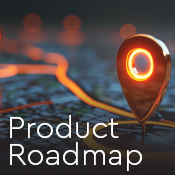PSA vs. RMM: Which is better? This is a question many managed services providers (MSPs) may ask themselves at various stages of growth. But it’s not necessarily a “versus” situation—both solutions are vital to managing a successful MSP.
Let’s start with some quick definitions:
- Remote monitoring and management (RMM) software allows technicians to monitor and manage customers’ endpoints and networks, automate alerts, and track support issues in a centralized dashboard. A good RMM will integrate with ticketing management systems and other tools to make daily operations easier and help MSPs scale.
- Professional services automation (PSA) tools are less about the customer-facing work of an MSP and more about managing the business itself. They integrate across the whole MSP’s business, which gives MSPs 360-degree visibility into the overall health of their business—from finance and HR to sales to client management and ticketing. PSAs can automatically follow up with prospects, track, document, and route tickets, and more.
If you’re considering RMM or PSA, you may be surprised to find that integrating both tools into your tech stack can yield better business outcomes.
Benefits of RMM and PSA
RMM and PSA software go hand in hand and are important to running a successful MSP business.
|
Benefits of RMM
|
Benefits of PSA
|
|
Proactively keeps issues from occurring (20% reduction in number of tickets based on our Total Economic Impact™(TEI) of the ConnectWise Platform study)
|
Decreases routine admin work
|
|
Provides a better customer experience with increased uptime.
|
Provides greater insight into business metrics
|
|
Offers ease of access from PSA
|
Increases employee utilization
|
|
Enables faster resolution times (organizations estimated that they were able to shorten engineers’ involvement by 60% based on our TEI study)
|
Decreases costs
|
|
Increases security with automatic patching, configuration, and policies.
|
Enables the shared flow of info across all teams
|
While RMM and PSA each have their separate benefits, they have one key element in common: They help create better service and happier customers.
Use cases for PSA software
At its core, PSA software helps improve business operations by automating day-to-day tasks, saving MSPs time and money.
MSPs can use PSA software to:
- Manage contracts and customer SLAs.
- Automate follow-up emails after performing a service.
- Manage and streamline billing and invoicing.
- Accurately forecast revenue.
- Facilitate vendor and employee time tracking.
Use cases for RMM software
RMM software can help MSPs extend the reach of their team without hiring any new staff. It’s a critical tool for MSPs just getting started or looking for ways to grow their client base.
Some of the ways MSPs can leverage an RMM platform are by:
- Collecting data about client networks and IT assets.
- Tracking and monitoring security threats and vulnerabilities.
- Identifying and monitoring unauthorized network activity.
- Generating alerts and tickets for troubleshooting scenarios.
- Simultaneously monitoring multiple clients or endpoints.
Questions to ask when debating PSA vs. RMM
If you are considering implementing PSA vs. RMM, here are some questions to ask yourself.
How much can you handle in-house?
Essentially, an MSP can start up with just an RMM. An RMM tool can still do ticketing, enable you to deploy agents onto a customer’s network or devices and act as a managed services tool.
But running an MSP business takes more than IT skills. HR, finance, marketing, and customer account management are just a few areas needed to run a company.
How much bandwidth do you have to manage these manually? Where do your leaders need to focus their time?
It’s natural for businesses to grow organically, but all too often, this means MSPs find themselves in silos of chaos within their own businesses. An RMM can’t support HR, sales, and other functions to run a business properly. This is especially true now when both an MSP’s staff and clients are working remotely. Old processes, once done manually or on paper, need to be digitized and integrated. A PSA can make business management more efficient, transparent, and easy.
In combination, an RMM and PSA can streamline business operations, with significant return on investment (ROI) for leaders when it comes to their busy schedules—with more automated tasks, they can invest attention where it matters most.
How many clients do you want to support?
All MSPs operate differently, service different types of clients, and have varying staffing levels. When looking at RMM and PSA software, it’s important to determine how many clients your business already supports and how many you want to support.
If you’re looking to grow your book of business, then it’s time for a better ticketing solution than Outlook. Scaling your business will require a solution that enables you to support more clients and service more endpoints. A good RMM tool is essential to serving clients and making the most of MSPs’ time, while a PSA will help run your business’s back office more smoothly.
What are your long- and short-term goals?
Once you know how much you can handle internally and how many clients you want to work with, it’s time to determine the trajectory of your business. Look at your business goals and prioritize which are short term and long term.
Perhaps you’re looking to diversify the types of businesses and regions you want to serve. Perhaps you want to bring on more full-time staff in a year or are happy at your current size. No matter what, it’s always a good idea to look ahead and proactively build the technical and business infrastructure necessary to support your goals.
Good RMM and PSA tools should integrate together. With both, MSPs can easily merge functions to resolve client issues faster and keep the business running.
PSA vs. RMM: Are they better together?
When you step back and look at RMM vs. PSA software, it’s almost as if they are two sides of the same coin. PSA software helps you streamline your MSP company's end-to-end business operations, while RMM software helps you effectively manage your clients’ IT infrastructure.
Savvy MSPs rely on both tools working together to scale their businesses. An RMM platform can allow you to intelligently monitor and manage more endpoints at scale, while PSA takes care of the administrative side of your business, so you don’t have to.
When implemented properly, RMM and PSA software can optimize your business operations and ultimately deliver better customer satisfaction. For more information on how blending solution tools can lead to improved efficiency, check out our eBook, ConnectWise PSA & ConnectWise Automate: Better Together.
Finding the right PSA and RMM solutions
At this point, it should no longer be a matter of PSA vs. RMM software. Best-in-class MPSs harness the power of both platforms working together.
When considering PSA and RMM solutions, make sure the platform you choose can expand with your business. Look for software that integrates well with other platforms and supports the potential for automation or advanced AI technology. Our webinar, Utilize AI as a Force Multiplier in ConnectWise PSA, shows how AI can support PSA software.
ConnectWise’s award-winning RMM and PSA solutions deliver unmatched scalability and security, allowing MSPs to increase profitability while delivering exceptional customer service. Watch a live demo of the ConnectWise platform to see how our best-in-class software can help your business—and your customers.














